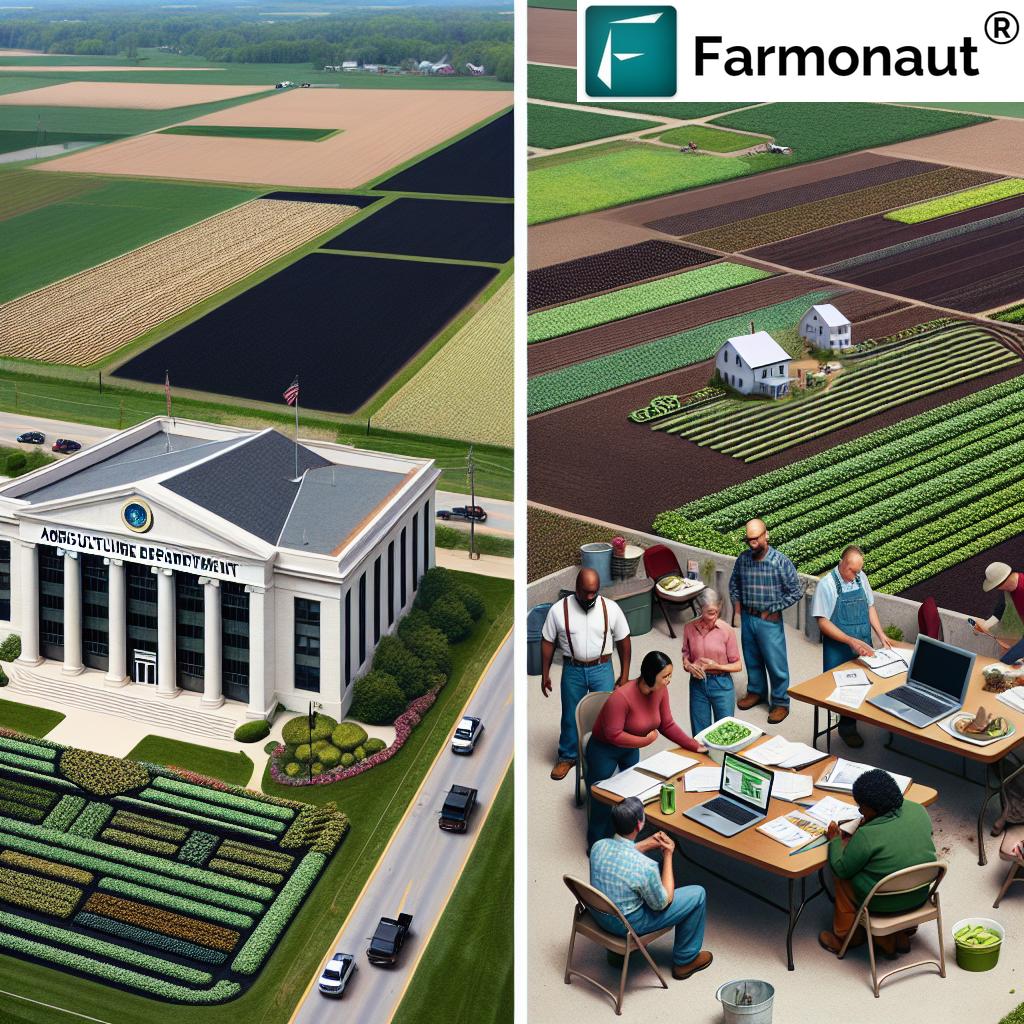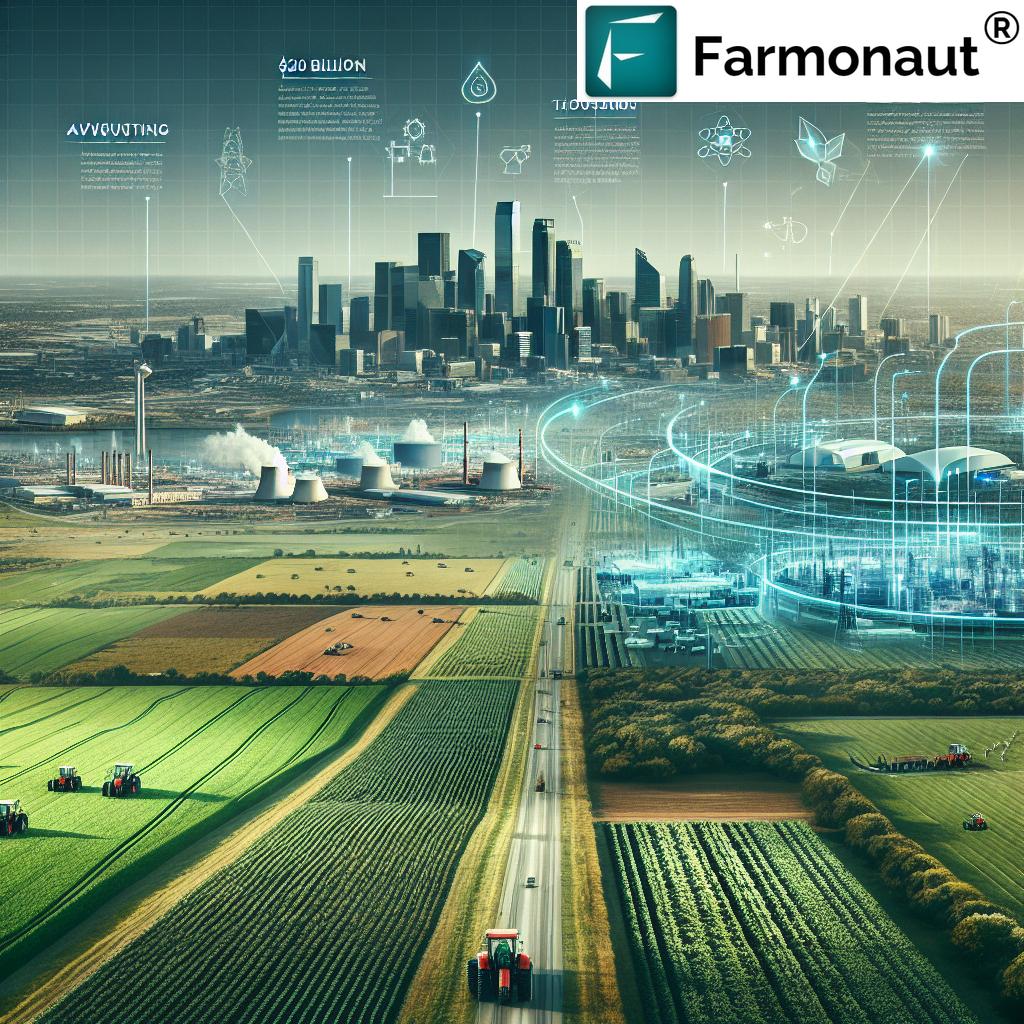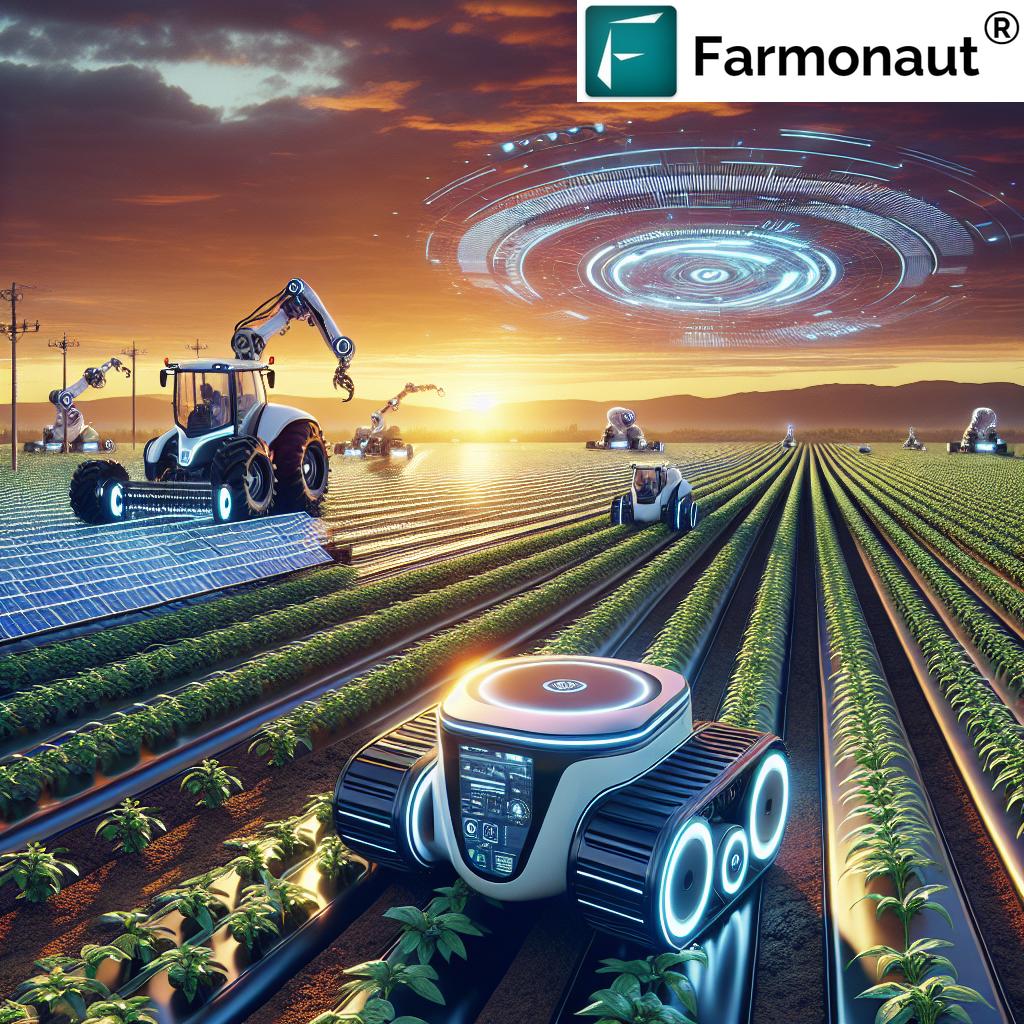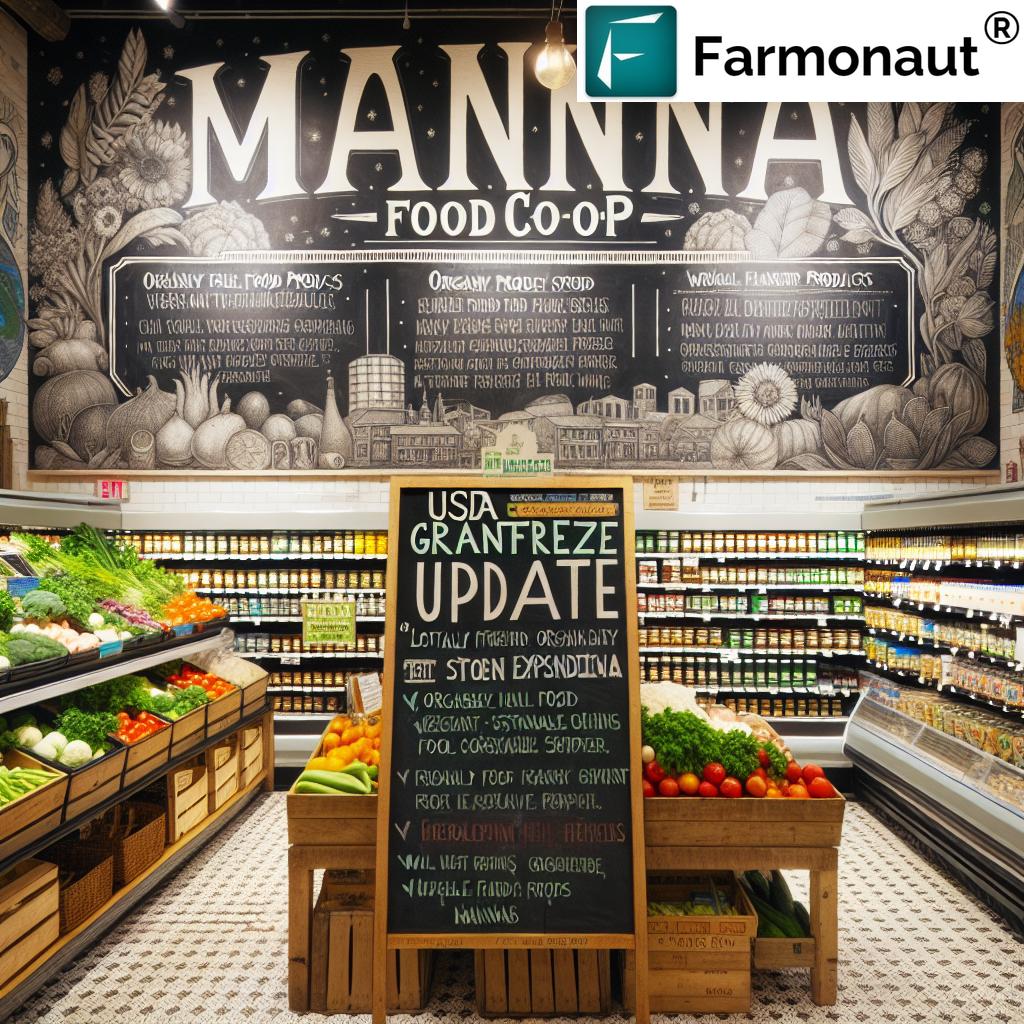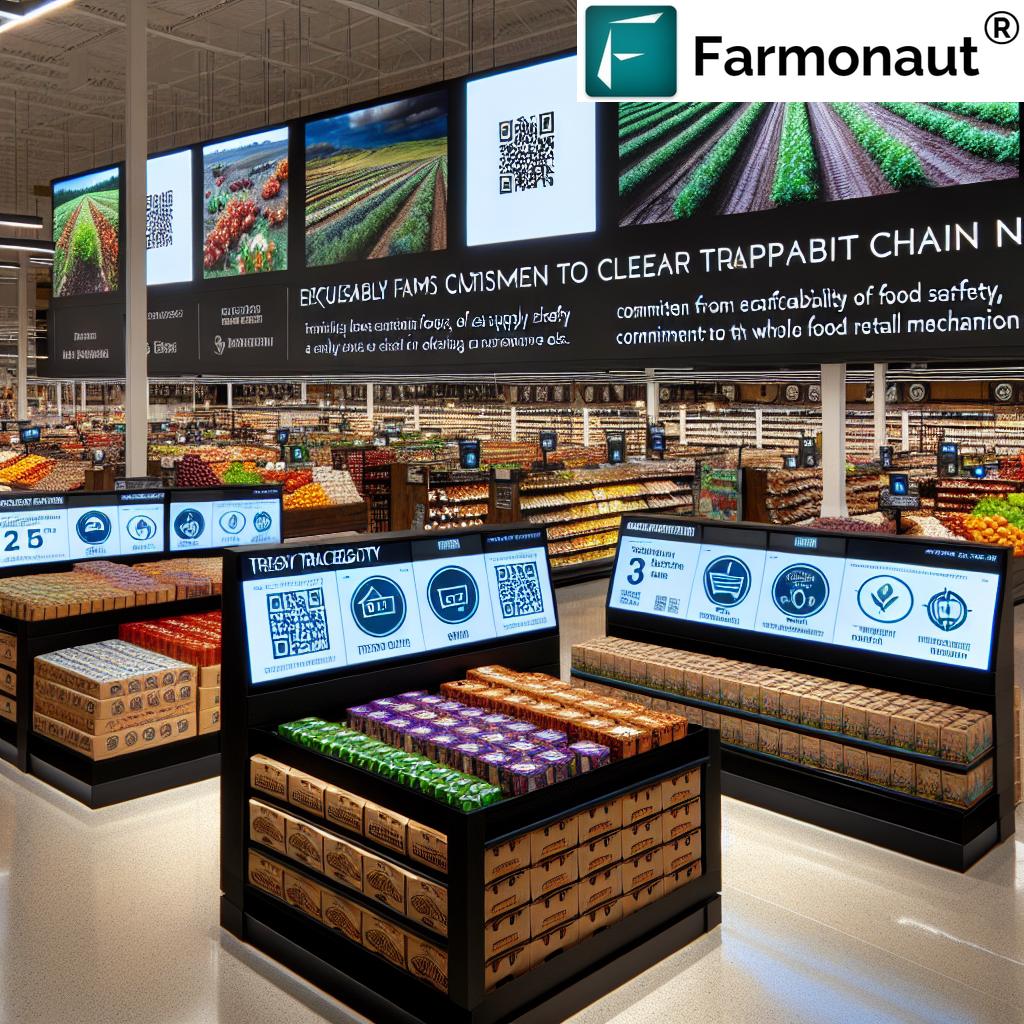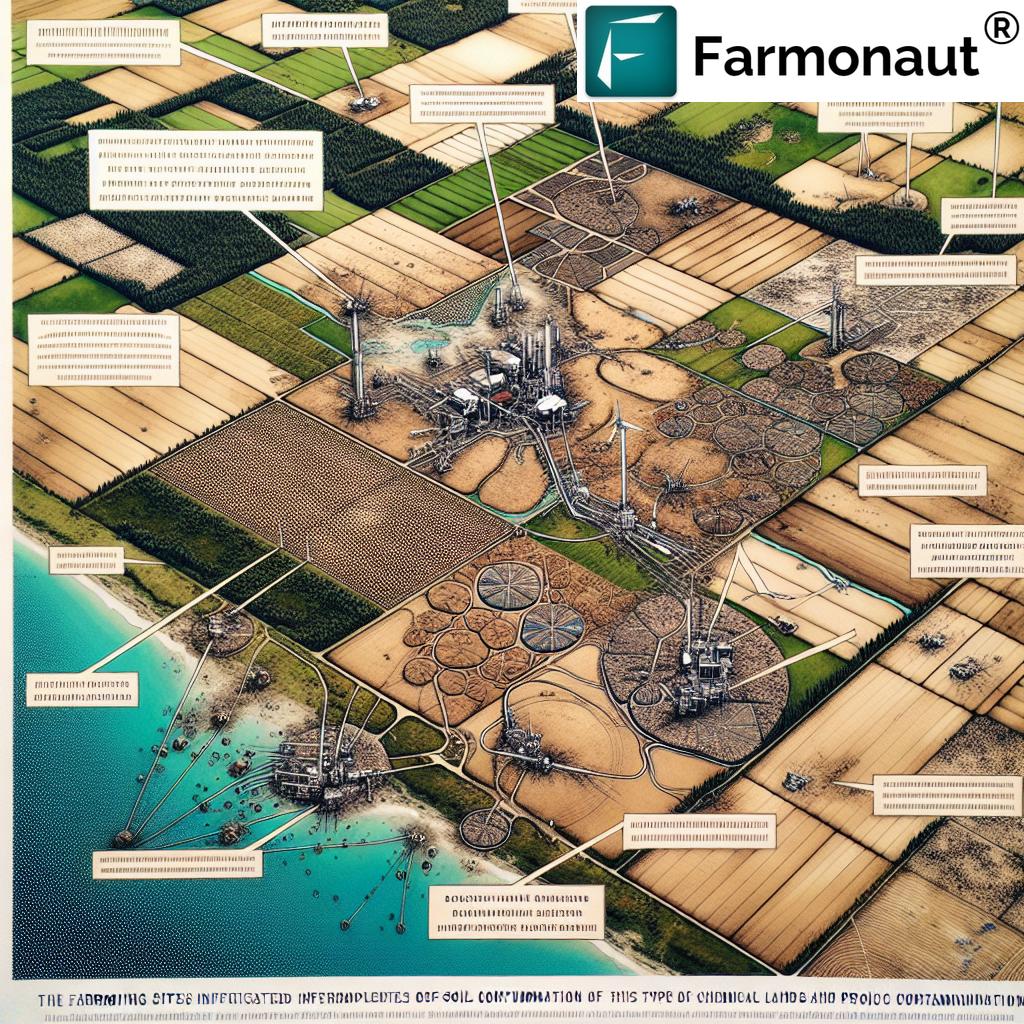Table of Contents
- Introduction: Central Illinois Ag—Championing Sustainability & Innovation in 2025
- Understanding Central Illinois: The Heartland of American Agriculture
- Central Illinois Ag: Landscape and Farmland in 2025
- Agricultural Service Evolution: Atlanta as a Key Local Center
- Sustainable Practices and Environmental Stewardship
- Modern Technology & Innovation in Agriculture: Precision, Analytics, and More
- Comparison Table: Modern Agricultural Technologies and Sustainable Benefits (2025)
- Farmland Ownership, Management, and Market Trends
- Livestock Integration and Diversification in Central Illinois
- Supporting Infrastructure for Central Illinois Ag
- How Farmonaut Empowers Modern Central Illinois Agriculture
- Looking Beyond 2025: Growth, Opportunities, and Sustainability
- Frequently Asked Questions
- Conclusion: Central Illinois Agriculture—A Pillar for the Future
“Sustainable agriculture in Central Illinois increased farmland productivity by 23% from 2020 to 2025 with advanced technology.”
Central Illinois Ag: Top Ag Service & Farmland in Atlanta
Central Illinois ag stands at the forefront of sustainable food production and rural development in 2025, merging tradition with modern innovation. As the heartland of American agriculture, this region continues to play a pivotal role in feeding the nation, ensuring economic stability, and leading environmental stewardship. In this comprehensive guide, we will explore how central Illinois agriculture—anchored by regional hubs like Atlanta, Illinois—is redefining efficiency, sustainability, and growth through innovative agricultural service providers and technological advancements.
Whether you are an aspiring farmer, agribusiness professional, landowner, investor, or simply interested in the future of sustainable agriculture, this blog uncovers the major forces shaping farm land in Illinois in 2025 and beyond.
Understanding Central Illinois: The Heartland of American Agriculture
Central Illinois is often hailed as the beating heart of American agriculture. Its modern role extends beyond simply growing crops: it is a sophisticated and dynamic ecosystem of farmers, service providers, research institutions, technological innovators, and local governments.
Spanning vast, fertile soils, central Illinois ag is characterized by an ideal combination of soil health, favorable climate, and access to agricultural infrastructure—factors making it a cornerstone of the national food production system.
- Rich, fertile soils and a favorable climate enable high yields for corn, soybeans, and wheat.
- Productive farmland is primarily devoted to staple grains, but also supports livestock, specialty crops, and sustainable farming practices.
- Atlanta, Illinois, is a key ag service center (not to be confused with Atlanta, Georgia), providing strategic resources to the surrounding rural region.
- Modern agricultural service providers connect farmers to state-of-the-art technology, agronomic consulting, equipment leasing, and data-driven decision-making tools.
Central Illinois Ag: Landscape and Farmland in 2025
The agricultural landscape of central Illinois is characterized by vast expanses of productive farmland stretching across counties like Logan, Macon, McLean, and Sangamon. These lands are primarily devoted to the cultivation of corn, soybeans, and wheat—three crops that have anchored the regional and national economy for decades.
With above-average soil organic matter and optimal precipitation, this region consistently achieves among the highest yields in the country. By 2025, precision agriculture tools and agricultural service providers have enabled growers to optimize inputs, making every acre more efficient and environmentally responsible.
- Crop diversity is increasing—farmers are experimenting with cover crops, specialty grains, and regenerative practices.
- Adoption of smart management systems—from soil health monitoring to irrigation scheduling and satellite-driven analytics.
- Avoiding monoculture risks—integrating livestock and rotating crops to preserve land quality.
Agricultural Service Evolution: Atlanta as a Key Local Center
Atlanta, Illinois has emerged as a key hub for central illinois ag service providers, offering essential agronomic consulting, equipment, and digital solutions. Not to be confused with its namesake in Georgia, this local center sits at the crossroads of agricultural commerce and technological advancement.
Agricultural service companies based in Atlanta and other regional hubs offer a wide range of solutions tailored to modern farming:
- Equipment leasing and financing to enable flexible upgrades to the latest precision implements without heavy upfront costs.
- Agronomic consulting for in-depth, science-based guidance on pest management, nutrient application, and conservation planning.
- Pest and disease monitoring using digital scouting, sensors, and even drones for reduced pesticide use and improved crop resiliency.
- Local access to support, training, and troubleshooting, ensuring technology benefits are fully realized by farmers of all scales.
The result: Farmers across central Illinois are better equipped to balance productivity, risk, and environmental stewardship, boosting overall food security.
Sustainable Practices and Environmental Stewardship in Central Illinois Ag
Sustainability remains the focal point for central Illinois agriculture in 2025. The region has seen an increasingly rapid adoption of conservation practices—from cover cropping and no-till farming to nutrient management plans—designed to preserve soil quality while reducing runoff into local waterways.
These efforts align with broad societal (and consumer) expectations for responsible food production, helping farmers maintain their license to operate amid evolving state and federal regulations.
- Soil health monitoring and crop rotation sustain productivity while protecting against erosion and nutrient loss.
- Cover cropping (like rye, clover, and radishes) boosts organic matter, improves water retention, and strengthens the soil microbiome.
- No-till and reduced-till practices facilitate carbon sequestration and minimize greenhouse gas emissions, supporting a more climate-smart agriculture.
- Buffer strips and precise fertilizer application curb nutrient runoff, safeguarding both yields and local water quality.
By preserving the integrity of the farmland, central Illinois ag is positioning itself at the national forefront of environmental stewardship.
“Over 70% of Central Illinois farms adopted innovative ag services by 2025, reducing environmental impact significantly.”
Modern Technology & Innovation in Central Illinois Agriculture
Technological innovation is at the heart of central Illinois ag’s 2025 transformation. Advances in data analytics, satellite monitoring, precision farming, and AI-driven advisory systems have deepened the ability of farmers to optimize yields, minimize environmental impact, and ensure long-term land viability.
- Real-time data from satellites and sensors allow for informed decisions on planting, irrigation, and fertilizer application.
- Resource management platforms streamline irrigation, input scheduling, pest management, and fleet logistics.
- AI-powered recommendations (such as with Farmonaut’s Jeevn AI) help growers fine-tune every aspect of their operations for both profitability and sustainability.
- Blockchain-based traceability solutions ensure transparency in supply chains—a critical edge as consumers and buyers demand accountability.
By embracing these technological innovations, central Illinois farmers and ag service providers continue to lead the way in sustainable farm management.
Comparison Table of Modern Agricultural Technologies and Their Sustainable Benefits in Central Illinois (2025)
| Technology / Service | Adoption Rate (2025, Central Illinois) % | Estimated Yield Improvement % | Estimated Reduction in Environmental Impact % | Sustainability Benefit Highlights |
|---|---|---|---|---|
| Precision Irrigation | 61 | 13 | 18 | Minimizes water use, reduces nutrient runoff, boosts water-use efficiency |
| Remote Sensing & Satellite Monitoring | 72 | 17 | 15 | Detects crop stress early, enables rapid intervention, reduces waste |
| Soil Mapping & Nutrient Management | 68 | 16 | 20 | Prevents overfertilization, optimizes plant nutrition, preserves soil health |
| Smart Machinery & AI Guidance | 55 | 12 | 14 | Reduces fuel and input waste, enhances operational accuracy |
| Blockchain Traceability | 34 | Varies | 10 | Builds consumer trust, reduces fraud, supports transparency |
| Fleet Resource Management | 47 | 8 | 8 | Cuts down unnecessary trips, improves machinery longevity, lowers emissions |
| AI-Based Advisory Systems | 52 | 14 | 16 | Enables precision decisions, supports adaptive management, reduces waste |
| Carbon Footprinting & Monitoring | 33 | — | 21 | Promotes climate-smart strategies, helps farms meet sustainability goals |
Want to track your farm’s carbon footprint and adopt climate-resilient practices? Learn more about Farmonaut’s Carbon Footprinting Solution for Central Illinois farmland.
Ensure end-to-end product authenticity and consumer trust on your agri-outputs—explore Farmonaut’s Blockchain-Based Product Traceability.
Farmland Ownership, Management, and Market Trends in Central Illinois (2025 & Beyond)
The pattern of farmland ownership across Central Illinois is undergoing significant change as new generations take the reins, and as **farmland value** continues to appreciate. Land stewardship and conservation are at the forefront, with both institutional and family landowners eager to secure the long-term viability and profitability of their investments.
- Generational transfers anchor the majority of land stewardship decisions, with a focus on regenerative practices.
- Agricultural service organizations facilitate land conservation through educational programs and incentive plans—critical as urbanization pressures rise in several counties.
- Market development opportunities reward farms that can demonstrate environmental and social responsibility to specialty buyers, processors, and food companies.
- Land management platforms and real-time technology—such as those provided by Farmonaut—empower landowners and tenant farmers to maximize both productivity and sustainability.
Livestock Integration & Diversification: Increasing Farm Resilience
Livestock farming remains an integral part of the central Illinois economy and landscape. Many operations are turning to **integrated crop-livestock systems**, which promote:
- Nutrient recycling—livestock manure is managed and applied to fields, reducing the need for synthetic fertilizers, improving soil health, and closing nutrient loops.
- Diversified income streams, which buffer against market volatility in any one sector (i.e., if grain prices dip but livestock demand is strong, farms remain financially stable).
- Improved land management through strategically grazed pastures and cover crops, supporting long-term stewardship.
Supporting Infrastructure for Central Illinois Ag
Infrastructure development is vital for the success of agriculture in Central Illinois. Improvements made from 2020 to 2025 have allowed the region to maintain its competitive edge while boosting local economic growth.
- Rural broadband expansion—enables real-time data transfer, remote monitoring, and access to digital educational resources across the local farming community.
- Upgraded transportation networks—ensures efficient movement of grain, livestock, and value-added agri-products to processing facilities and markets locally and nationally.
- Grain handling and storage facilities—increase flexibility in harvest and sales, reduce spoilage, and open up better marketing opportunities for crop producers.
- Support for precision ag infrastructure—including cellular, satellite, and sensor connectivity for on-farm equipment and networks.
These advances in infrastructure directly contribute to enhancing productivity, reducing operational risks, and maintaining central Illinois’s national leadership in agriculture.
How Farmonaut Empowers Modern Central Illinois Agriculture
As we look toward a data-driven future, advanced technology—especially satellite, AI, and digital platforms—are essential for supporting sustainable agriculture. We at Farmonaut are dedicated to making satellite-driven insights affordable and accessible across the globe—including Central Illinois.
-
Real-time crop health monitoring: We utilize multispectral satellite images (NDVI, soil moisture, evapotranspiration) to give farmers advanced notice of potential crop stress or disease and guide in-season management for higher productivity and land conservation.
Try our Large-scale Farm Management Platform to streamline Central Illinois farmland operations, from monitoring to advisory. - Jeevn AI Advisory for growers: Our AI system delivers customized, real-time decision support based on satellite and weather data, covering soil health management, irrigation, pest and disease risks.
-
Blockchain-based traceability solutions: We help agricultural producers establish transparent, secure supply chains—adding value for specialty markets, processors, and export buyers.
Discover how traceability solutions work in Central Illinois agriculture. -
Fleet and resource management: For farms and agri-service businesses, we optimize machinery and equipment use to cut operational costs and reduce environmental impact.
Explore our Fleet Management Tools for agriculture in Atlanta and beyond. - Environmental impact tracking & carbon footprinting: Our monitoring tools provide insights on farm emissions, resource use, and sustainability—supporting compliance, grants, and the shift to green markets in Illinois.
-
Financial access for crop loans and insurance: Our data-driven verification can help reduce fraud and simplify the application process.
See our crop loan and insurance solutions for Illinois farm owners.
Our mission is to empower every farmer, landowner, and service provider in Central Illinois to make data-driven, profitable, and sustainable decisions for decades to come.
Are you a developer or business building custom ag or land management platforms?
- Check our API: Farmonaut API for Satellite Data and Monitoring
- See developer docs: API Documentation for Weather, Crop & Field Data
Looking Beyond 2025: Growth, Opportunity, and Environmental Responsibility
As we step further into a data-and-technology-driven era, central Illinois agriculture faces both unparalleled opportunity and rising responsibility. Through continued investment in innovation, sustainable land management, community education, and infrastructure, the region stands ready to preserve its status as a pillar of food security and economic growth for the nation.
Key Growth Strategies:
- Integrating satellite, AI, and sensor technology at both farm and regional scales to optimize yields and safeguard soil, water, and air.
- Supporting continuous farmer education to promote adaptive stewardship and tech adoption, ensuring environmental and economic resilience.
- Expanding on-farm and regional renewable energy projects (e.g., solar, biogas) in synergy with cropping systems.
- Fostering community engagement and partnerships among growers, service providers, and local governments to overcome resource and knowledge gaps.
- Empowering the next generation of Illinois farm owners through generational stewardship, incentivizing conservation, and infrastructure investment.
The result? Central Illinois ag will continue to play a pivotal role in feeding expanding communities, supporting local and national economies, and preserving the landscape that defines this region as the American heartland.
Frequently Asked Questions—Central Illinois Ag, Services, and Farmland (2025)
What crops are most commonly grown in Central Illinois farmland in 2025?
The farmland in Central Illinois is primarily devoted to corn, soybeans, and wheat. There is also a growing emphasis on cover crops, specialty grains, and regenerative agriculture to preserve soil health and sustainability.
What makes Atlanta, Illinois, a key agricultural service center?
Atlanta, Illinois, serves as a local hub for advanced agricultural service providers, connecting regional farmers to equipment leasing, agronomic consulting, pest management, and precision ag solutions. It stands out due to its strategic location and strong ag infrastructure—distinct from Atlanta, Georgia.
How is technology changing central Illinois ag in 2025?
Technology—from satellite monitoring, AI-based advisory systems, and blockchain traceability to precision machinery—is revolutionizing every aspect of central Illinois agriculture. Tech adoption has increased productivity, reduced environmental impact, and made information-driven farming the regional standard.
What are the top sustainable practices adopted by central Illinois farmers?
Sustainable practices include no-till and reduced-till cropping, cover cropping, buffer strips, nutrient management plans, water conservation, and livestock integration. These are pivotal for maintaining productivity, preserving soil health, and reducing nitrogen runoff into regional waterways.
How does Farmonaut support central Illinois farmland owners?
We at Farmonaut offer satellite-based crop and soil monitoring, resource management, AI-powered advisory, blockchain traceability, and environmental tracking—all accessible via user-friendly browser, mobile apps, and APIs. Our tools empower central Illinois farmers to make informed, sustainable decisions for the future.
What infrastructure improvements have benefited central Illinois farming?
Key improvements include expanded rural broadband (for digital monitoring), upgraded road and rail networks (for crop transport), modern storage facilities, and support for smart ag equipment integration.
Conclusion: Central Illinois Agriculture—A Pillar of Sustainable Farming and Economic Growth in 2025
Central Illinois agriculture in 2025 stands as a model of how the fusion of tradition and technology, local knowledge and global innovation, can create a resilient, productive, and sustainable agri-ecosystem. Through robust agricultural services and visionary land management—anchored by community centers like Atlanta—Illinois continues to play a pivotal role in feeding communities, powering the rural economy, and preserving the farmland that defines the region’s identity.
As we look beyond 2025, continued investment in sustainability, technology, and community collaboration will ensure Central Illinois remains a cornerstone of American food security and environmental stewardship for decades to come.
Are you ready to leverage modern ag technology for your Illinois farmland? Try Farmonaut’s satellite-based solutions for real-time crop monitoring, resource management, and sustainability—start here.





